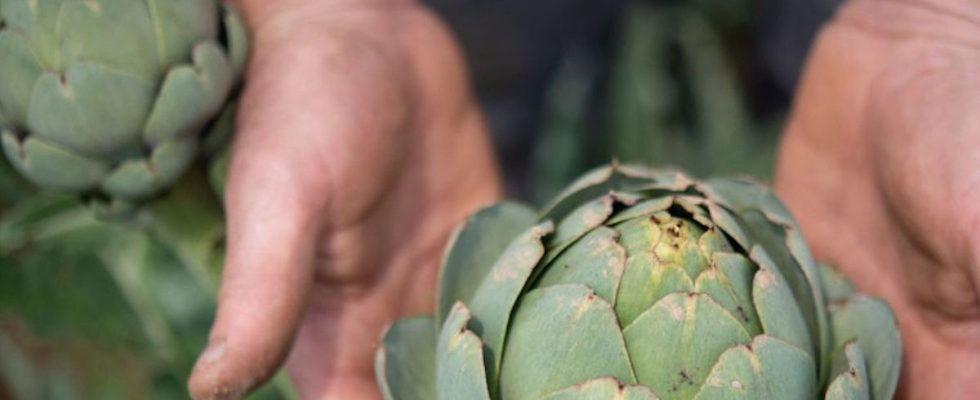Published on
Updated
Reading 2 mins.
Emblem of gastronomy in France, the artichoke is no longer popular: perceived as difficult to cook, shunned by the younger generation, its sales continue to decline in the country while the vegetable remains popular in Italy and Spain.
“2022 was a catastrophic year and this year we still have the consequences of the heat and the dry weather”, explains Christian Bernard, 52, in the middle of his field of artichokes in the north of Brittany (west), the main place of vegetable cultivation in France.
“In big fleshy artichokes, we went down to 20/25 euro cents a head paid to the producer. We should be at 55/60…”, plague the market gardener who has been cultivating this plant for 30 years. A sign of discontent, on June 9 tens of tons of unsold goods were distributed by producers in Lannion (west).
At issue in this drop in prices, the weather factor: production in Brittany and that of Roussillon (south-east), the second largest region in France, overlapped in an unusual way with an influx in June on the stalls of artichokes, which are says he likes having his feet in the water and his head in the sun. But in addition to this situation, there is a structural trend. Because according to Pierre Gélébart, artichoke product manager at Prince de Bretagne, a brand owned by several producer organizations, “we lose 10,000 tonnes of artichoke production every ten years”which is now only around 20,000 tonnes in northern Brittany.
How can we explain consumers’ lack of interest in this vegetable that was once very present in families and on canteen menus? At a time when meal preparation time is being reduced, the artichoke is seen as a vegetable that takes a long time to cook and is no longer in tune with new consumer habits. “The French meal, starter, main course, dessert, whether we like it or not, is losing momentum”, regrets Mr. Gélébart, stressing that it can be prepared in just ten minutes in the microwave.
The artichoke, in competition with vegetables that were once rare on our plates such as the avocado, hardly appeals to the younger generations. “Nearly 70% of consumers are over 60”notes Mr. Gélébart.
NO to diets, YES to WW!
“Vegetable of the Brave”
On the producer side, market gardeners are wondering about the future of the artichoke, nicknamed the “vegetable of the brave” because of the labor time required to cultivate it, given its low profitability. “That represents 300 hours of work per year per hectare”compared to eight hours a year for a cereal field, observes Marc Rousseau overlooking his field in Henvic, which offers a magnificent view of the bay of Morlaix (west).
“You have to look for the consumer and obtain remunerative prices, otherwise the producers will get tired and turn to another product. It’s a shame to see cultures that are part of French gastronomy disappear”adds the market gardener, stressing that in Italy and Spain the annual consumption of “carciofo” and “alcachofa” per person reached eight to nine kilos against 400 g per Frenchman.
The players in the world of the artichoke, which was introduced for the first time in France on the table of the monarchs in the 16th century and implanted around 1810 in the Breton fields, point to its nutritional qualities and its richness in fibers, its deep roots which allow to drain the soil well or even its atypical appearance. “There are plenty of virtues in eating the artichoke and for children it has a playful aspect, which we peel”, supports Arnaud Lécuyer, vice-president of the Brittany region in charge of agriculture.
